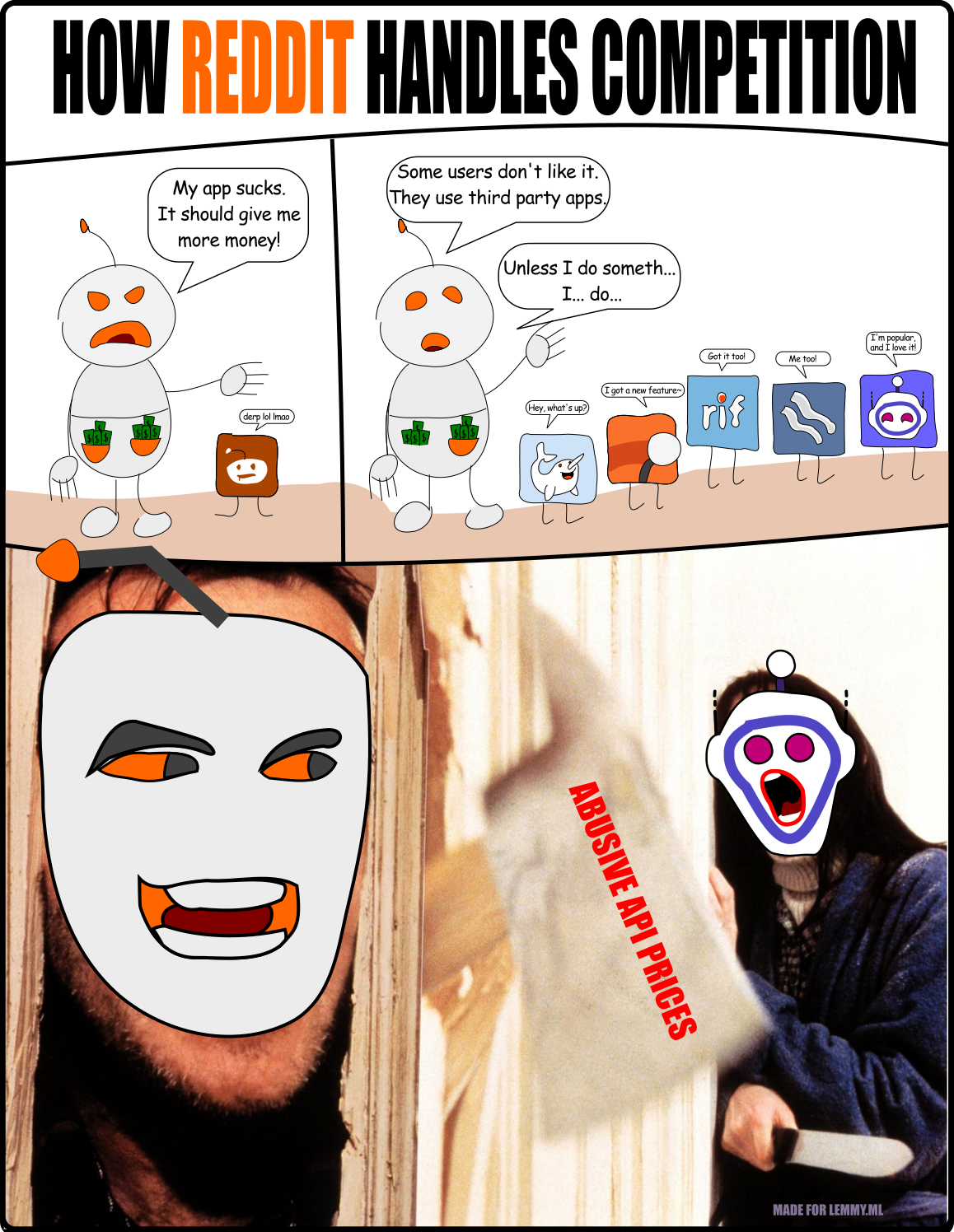Worst hypothesis they just need to mess around a bit. For example I don't think that queerasfu.ck would be registered.
lvxferre
They could get a .ck domain instead and move to queer.as.fu.ck, no?
Sorry for the question, but where are you from? I learned this with my mother, so I don't know if it's something common here (Brazil) or something that she picked from her Polish or Italian relatives.
That's surprisingly accurate, as people here are highlighting (it makes geometrical sense when dealing with complex numbers).
My nephew once asked me this question. The way that I explained it was like this:
- the friend of my friend is my friend; (+1)*(+1) = (+1)
- the enemy of my friend is my enemy; (+1)*(-1) = (-1)
- the friend of my enemy is my enemy; (-1)*(+1) = (-1)
- the enemy of my enemy is my friend; (-1)*(-1) = (+1)
It's a different analogy but it makes intuitive sense, even for kids. And it works nice as mnemonic too.
Another important detail is that Digg v4 pissed off most of the userbase, so the impact was pretty much immediate. Reddit APIcalypse pissed off only power users instead; the impact will only come off later (sadly likely past IPO).
Lunix sucks so much that it got stuck into the version 2 for years.
It's the Sex update! They actually released it! The mad devs!
Some of the assets look clearly similar to the ones in Stardew Valley, while some are completely different. It's... interesting to see.
I love the idea of backyard chickens. My parents got some in my childhood; and it allows you to get farming mechanics in a non-farm game.
Let's go simpler: what if your instance was allowed to copy the fed/defed lists from other instances, and use them (alongside simple Boolean logic plus if/then statements) to automatically decide who you're going to federate/defederate with? That would enable caracoles and fedifams for admins who so desire, but also enable other organically grown relations.
For example. Let's say that you just joined the federation. And there are three instances that you somewhat trust:
- Alice - it defederates only really problematic instances.
- Bob and Charlie - both are a bit prone to defederate other instances on a whim, but when both defed the same instance it's usually problematic.
Then you could set up your defederation rules like this:
- if Alice defed it, then defed it too.
- else, if (Bob defed it) and (Charlie defed it), then defed it too.
- else, federate with it.
Of course, that would require distinguishing between manual and automatic fed/defed. You'd be able to use the manual fed/defed from other instances to create your automatic rules, to avoid deadlocks like "Alice is blocking it because Bob is blocking it, and Bob is blocking it because Alice is doing it".
Aaaaah. I really, really wanted to complain about the excessive amount of keys.
(My comment above is partially a joke - don't take it too seriously. Even if a new key was added it would be a bit more clutter, but not that big of a deal.)
The source that I've linked mentions semantic embedding; so does further literature on the internet. However, the operations are still being performed with the vectors resulting from the tokens themselves, with said embedding playing a secondary role.
This is evident for example through excerpts like
The token embeddings map a token ID to a fixed-size vector with some semantic meaning of the tokens. These brings some interesting properties: similar tokens will have a similar embedding (in other words, calculating the cosine similarity between two embeddings will give us a good idea of how similar the tokens are).
Emphasis mine. A similar conclusion (that the LLM is still handling the tokens, not their meaning) can be reached by analysing the hallucinations that your typical LLM bot outputs, and asking why that hallu is there.
What I'm proposing is deeper than that. It's to use the input tokens (i.e. morphemes) only to retrieve the sememes (units of meaning; further info here) that they're conveying, then discard the tokens themselves, and perform the operations solely on the sememes. Then for the output you translate the sememes obtained by the transformer into morphemes=tokens again.
I believe that this would have two big benefits:
- The amount of data necessary to "train" the LLM will decrease. Perhaps by orders of magnitude.
- A major type of hallucination will go away: self-contradiction (for example: states that A exists, then that A doesn't exist).
And it might be an additional layer, but the whole approach is considerably simpler than what's being done currently - pretending that the tokens themselves have some intrinsic value, then playing whack-a-mole with situations where the token and the contextually assigned value (by the human using the LLM) differ.
[This could even go deeper, handling a pragmatic layer beyond the tokens/morphemes and the units of meaning/sememes. It would be closer to what @njordomir@lemmy.world understood from my other comment, as it would then deal with the intent of the utterance.]

Damn, that's sad. Thank you for the info.